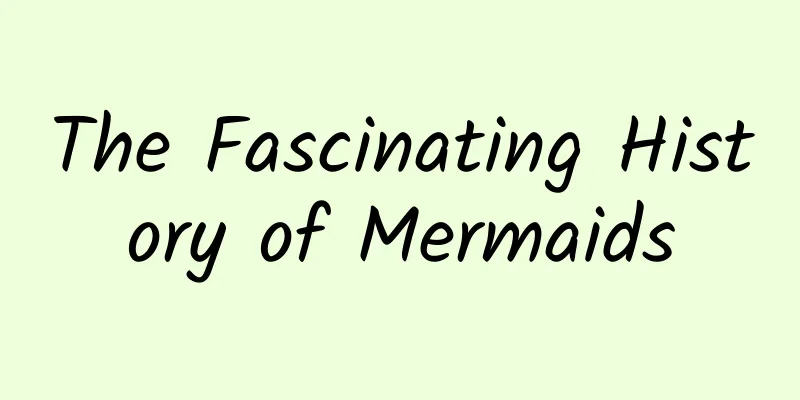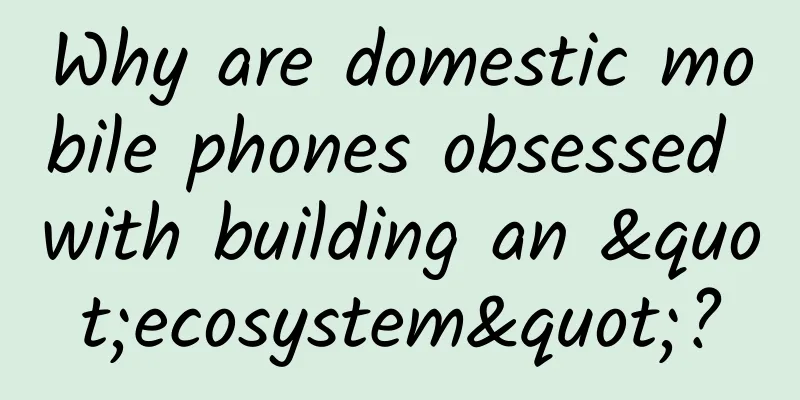The Fascinating History of Mermaids

|
Leviathan Press: Do you still believe in the existence of mysterious creatures? Mermaids, unicorns, dragons... all these creatures that were once "officially certified" to exist are now classified as fantasy. Some are unscientific (how can a dragon without wings fly in the clouds), and some are because there are more reasonable explanations (the sighting of mermaids is regarded as a case of wild dugongs). We accept science, but we do not lose our romantic fantasy because of it - after all, fantasy is the most attractive only when it has not been disenchanted. “Mermaids Exhibited Successfully in the Years 1758, 1775, & 1795,” hand-illuminated lithograph by John Paas, 1817. © loc.gov On May 6, 1736, the learned Benjamin Franklin informed his readers in the Pennsylvania Gazette of a recent sighting of a “sea monster” in Bermuda, “the upper part of whose body was shaped like that of a boy of about twelve years of age, with long black hair, and the lower part like that of a fish.” Apparently, the creature’s “human-likeness” inspired its captors to keep it alive. A similar report appeared in a 1769 issue of the Providence Gazette, which reported that crew members on a British ship off the coast of Brest, France, witnessed “a sea monster resembling a man” swimming around the ship, at one point “spending some time observing the beautiful female figure on our bow.” The captain, navigator, and “all thirty-two men” all confirmed the incident. For modern Britons, the above examples are typical newspaper stories. The fact that these encounters were reported tells us a lot. Even a smart person like Benjamin Franklin thought stories of sea monster and merman sightings were plausible and true enough that he was willing to spend time and money to print them in his widely read newspapers. In this way, printers and authors solidified a narrative of curiosity surrounding these fantastic creatures, and when a Londoner sat down with his newspaper (perhaps in a pub called The Mermaid) and read yet another story about a mermaid or sea god sighting, his skepticism might have turned to curiosity. During this period, philosophers’ debates over mermaids and sea gods illustrate their willingness to embrace the miraculous in their exploration of human origins. Naturalists used a wide variety of methodologies to critically examine these strange hybrids, and also argued for humanity’s aquatic origins by emphasizing the real existence of mermaids. As they traveled around the world, European philosophers treated the merman like any other creature they encountered, applying a variety of theories—including theories of racial, biological, taxonomic, and geographic difference—to understand its place in nature and, by extension, to define humanity’s place within it. "There was a 'strange and unexpected nymph ... captured in 1784, in the Gulph of Stanchio' and exhibited at Spring Gardens, London, 1795." © London Metropolitan Archives The cultural relevance of merpeople is well reflected in the combination of Western curiosity and imperial expansion. Wealthy individuals and philosophical societies funded expeditions to the New World by naturalists, botanists, and cartographers in the hope that they would expand humanity’s understanding of the world and its place in it. As more studies of mermaids and sea goddesses unfold, naturalists are demonstrating a growing fascination with these fantastic creatures. Importantly, these studies also reveal how the course of scientific inquiry has changed dramatically over the past two hundred years. Rather than relying exclusively on ancient texts and hearsay, 18th-century naturalists marshaled a variety of “modern” resources—global communications networks, scholars’ publishing opportunities, transatlantic travel, taxidermy, and learned societies—to rationally test what many people considered outlandish. Thus, a growing number of gentlemen are studying the mysterious merman by applying well-known, proven research methods, in the process both continuing and circumventing the so-called Enlightenment narrative. This is how 18th-century philosophers such as Cotton Mather, Peter Collinson, Samuel Fallours, Carl Linnaeus, and Hans Sloane complicated our and their contemporaries’ conceptions of science, nature, and human nature. In short, for much of the 18th century, the smartest minds in the Western world were chasing mermen around the globe. The Royal Society of London played a key role in this campaign, both as a repository and as a sponsor of legitimate scientific research. Sir Robert Sibbald, a respected Scottish physician and geographer, understood the Society’s desire for groundbreaking research. On November 29, 1703, he wrote to the Society’s president, Sir Hans Sloane, telling the London gentleman that he and his colleagues had been documenting the amphibians of Scotland, and that he was also attaching copperplate drawings that he hoped would be presented to the Royal Society. Aware of the Society’s keen interest in the latest research, Siebold told Sloane that he had “joined in the notes and drawings of certain aquatic amphibians and hybrids, the latter being mermaids or sirens, which have sometimes been seen in our seas.” Here we have the mention of mermen in an intellectual correspondence between two of the eighteenth century’s leading thinkers. Illustration: "Pesce Donna" (The Fish Woman), from Giovanni Antonio Cavazzi's Istorica de'tre regni Congo, Matamba, et Angola, 1687. © wikimedia Cotton Mather also wrote a letter to the Royal Society of London on July 5, 1716. This is not surprising, as the Boston naturalist often wrote detailed accounts of his scientific discoveries. However, the subject of this letter is a bit odd - the letter is titled "Sea Gods", and it shows that Mather sincerely believed in the existence of mermen. The fellow of the Royal Society of London begins by explaining that, until recently, he had considered mermen to be as imaginary as "centaurs or sphinxes." Mather has found numerous historical accounts of mermen, from the ancient Greek Demostratus's sighting of "the mummified corpse of a sea-god... in Tanagra" to Pliny the Elder's assertions of the existence of mermen and sea-gods. However, Mather notes that he considers many of these ancient accounts to be apocryphal, as "the doctrines of Pliny the Elder are not in good repute in our own times." However, once Mather read scattered ancient records from revered European thinkers such as Boaistuau and Bellonius, his "doubts ... were to some extent dispelled" about the creature's existence. Yet Mather was not convinced, at least not until February 22, 1716, when “three honest and trustworthy persons, travelling by ship from Milford to Brainford, Connecticut” encountered Poseidon. Upon hearing the news himself, Mather could only declare, “My confidence is now so thoroughly won over that I am compelled to believe in the existence of Poseidon.” As the creature escaped the group, "they saw his whole form, and saw his head, face, neck, shoulders, arms, elbows, chest and back, all in the form of a man... the lower part was the body of a fish, and the color of a mackerel." Although the "sea god" escaped, it convinced Mercer of the existence of human fish. Mercer insisted that his story was not fiction, and promised the Royal Society that he would continue to report "all new incidents in nature." Illustration of the Martinique Triton from the XXIX issue of The Universal Magazine of Knowledge and Pleasure (1761). © wellcome collection The famous naturalist Carl Linnaeus also devoted himself to the study of mermaids and sea goddesses. In 1749, after reading a number of newspaper articles detailing mermaid sightings in Nyköping, Sweden, Linnaeus wrote a letter to the Swedish Academy of Science urging it to organize a hunt “either to capture the animal alive or to capture the carcass and preserve it in alcohol.” Linnaeus admitted: "Science has no definite answer as to whether the existence of mermaids is fact, fiction, or the imagination of some marine fish." However, in his opinion, the rewards of hunting mermaids outweigh the risks, because such a rare phenomenon "may be one of the greatest discoveries that the Academy of Sciences can make, and the whole world will thank the Academy for it." Perhaps these creatures can reveal the origins of mankind? For Linnaeus, who is famous for his taxonomic research, this ancient mystery must be solved. Dutch artist Samuel Fallours also claimed to have discovered mermen in a remote area, sparking a decades-long debate that spanned continents and media types. From 1706 to 1712, Falloul lived in Ambon, Indonesia, working as an assistant to the clergy for the Dutch East India Company. During his time in one of the "Spice Islands," Falloul painted a variety of illustrations of the local flora and fauna. One of these drawings happened to depict a mermaid, or "sirenne." Falloul's "sirenne" closely resembled the classic mermaid image, with long sea-green hair, a cheerful face, a naked upper body, and a blue-green tail from the waist down. However, this mermaid had dark skin (slightly greenish), which meant it had similarities to the local indigenous people. In the notes accompanying Falloul’s original painting, the Dutch artist claimed that he “kept this siren in a jar of water in my house in Ambon, and it lived four days.” It was brought to him by Falloul’s son from the nearby island of Buru, “who bought it from the blacks for two ells.” Eventually, the creature whimpered and died of starvation, "it did not want to eat anything, neither fish, nor shellfish, nor moss or grass". After the mermaid died, Fallull "became curious and lifted up the front and rear fins of its body, and found that it was shaped like a woman". Fallull claimed that the specimen was then transported to the Netherlands, but was lost. However, the story of the Ambon siren has just begun. Samuel Fallull's watercolor The Siren, c. 1706-1712. © wikimedia A copy of Falloul's The Sirens, and "Ecrevisse" from the second edition of Louis Renard's Atlas of Fishes, Prawns and Crabs (1754). © wikimedia Louis Renard, a French-born bookseller who settled in Amsterdam, published his book Poissons, ecrevisses et crabes (1719), which included a copy of Fallour’s The Sirens, but Fallour’s original work had already been widely circulated several years before that. However, due to the unusually bright colors in Fallour's paintings and the unusual creatures themselves, many people doubted their accuracy and authenticity. Renard was particularly concerned about the authenticity of Fallour's "Siren", saying: "I am even afraid that the monsters painted under the name of mermaids... need to be corrected." In Falluir’s paintings, and in the dialogue that Renard subsequently initiated in letters, philosophers found both hope and disgust. Aernout Vosmaer, a Dutch collector and director of the Stadtholder’s zoo and “cabinet of nature and art,” wrote the preface to Renard’s 1754 edition of the Atlas of Fishes, Prawns, and Crabs, calling the objections to the reality of the mermaid “weak” and claiming that “this monster—if we must call it a ‘monster’ (though I do not understand the reason)” was only rarely seen because it was able to avoid human snares more beautifully than other creatures (because it was a hybrid of human race). Furthermore, Washmar argues that due to their biological similarities to humans, mermen "are more susceptible to postmortem decay than other fish species." This poor preservation of bodies not only makes sightings more difficult, but also explains why intact merman specimens are rarely found in antique collections. By the middle of the 18th century, more and more physicians not only believed in the existence of mermen, but also began to consider the implications of such creatures for understanding the origins and future of humanity. G. Robinson wrote in The Beauty of Nature and Art Displayed in a Tour Through The World (1764): "Though the natural historians generally consider mermen to be animals of legend... yet, from the number of writers who have left evidence of the reality of such creatures, there seems to be much reason for believing in their existence." Four years later, the Reverend Thomas Smith made Robinson’s argument more explicit, claiming that while “there are indeed many who doubt the reality of mermen…there seems to be sufficient evidence to prove their existence beyond dispute.” But the problem remained: people like Robinson and Smith could only rely on ancient, often ridiculed sightings or flimsy assumptions as their “evidence.” They needed scientific research to support their claims, and they did. Between 1759 and 1775, two particularly important articles appeared in the Gentleman's Magazine, each taking a unique scientific approach to the study of mermen. The first, published in December 1759, featured a full-page illustration of "a Siren, or Mermaid... said to have been exhibited at the fair of St Germains (in Paris) in 1758". The author notes that the drawing of the siren was "drawn from life by the celebrated Monsieur Gautier." Jacques-Fabien Gautier d'Agoty was a French printer and member of the Dijon Academy, who was widely recognized for his skill in printing images of exact scientific subjects. Even such a strange image, with Gautier's name attached, immediately gained credibility; but even without Gautier's endorsement, the drawing and its caption are distinguished by the use of modern scientific methods. Gautier had apparently come into contact with the creature, finding it "about two feet long, alive, very active, playing in a vessel of water, and seeming to maintain a high degree of merriment and agility." Illustration of a mermaid by Jacques-Fabien Gautier d'Agotye, colored etching, circa 1758. © wellcome collection Gautier later recorded: "When it is not moving, its posture is always erect. It is a female, and horribly ugly." Gautier found its skin "rough, its ears large, and its rump and tail covered with scales," which are detailed in the accompanying illustrations. Judging by the image, this isn’t the mermaid that has long graced cathedrals across Europe. Nor does it fit the descriptions of many other naturalists and discoverers throughout history. Most people’s sightings of mermaids are extremely feminine figures, characterized by flowing blue-green hair, but Gautier’s mermaid is completely bald, with “very large” ears and “horribly ugly” features. Gautier’s sirens were also much smaller than traditional mermaids, measuring only 60 centimeters (two feet) tall. More importantly, Gautier’s mermaid account reflects a mid-eighteenth-century approach to studying the magical side of nature: The Frenchman used highly regarded scientific techniques—in this case, he carefully examined the creature’s anatomy and drew an accurate drawing (in a style very similar to that of other anatomical drawings of creatures of the time)—to bring to life something that many still considered fantasy. Scholars have used Gautier's published drawings to weigh the reality of the mermaid. An anonymous contributor to the June 1762 issue of The Gentleman's Magazine said that Gautier's drawings "seem to establish irrefutably the fact that such monsters do exist in nature." But the author had further evidence. The April 1762 issue of the Mercure de France reported that in June of the previous year, two girls playing on the beach on the island of Noirmoutier (just off the southwest coast of France) had “discovered in a natural cavern a creature of human form, resting its weight on its hands.” In a horrific turn of events, one of the girls stabbed the creature with a knife and watched it “groan like a human being.” The girls then cut off the creature’s hands—“the fingers and nails were perfectly formed, and the fingers were webbed”—and sought the help of the island’s surgeon, who recorded his observations of the creature: "It was the same size as the largest human being... its skin was white, like that of a drowned person... its chest was like that of a plump woman, its nose was flat, its mouth was large, and its chin was dotted with what looked like a beard, made of tiny shells, and its body was covered with clusters of similar white shells. It had a fish tail, at the end of which was a pair of feet-like structures." Such a story—confirmed by a trained and trusted surgeon—lent further credence to Gautier’s research. For a growing number of 18th-century Britons, mermen did exist, bore a striking resemblance to humans, and warranted further study. In May 1775, the Gentleman's Magazine published an account of a mermaid, stating that in August 1774, "a merchant on his way to Natolia for trade had caught a mermaid in the Gulf of Stanchio, in the Archipelago Sea, or Aegean Sea." Like Gautier's "Siren" of 1759, this specimen was drawn and described in detail. However, the author also distanced himself from Gautier, noting that his mermaid was "very different from the one exhibited at the Saint-Germain fair a few years ago." Here comes an interesting development: by comparing the two mermaid prints, the author speculates on related racial and biological issues, believing that "there is reason to believe that there are two different genera of mermaids, or more precisely, two different species of the same genus, one similar to African blacks and the other similar to European whites." Although Gautier's siren "has the appearance of a black man in all respects," the author found that the mermaid he drew showed "European face and complexion." Its face is like that of a young woman, with light blue eyes, a small and beautiful nose, a small mouth and thin lips. A mixed page of illustrations, the second of which shows "A Mermaid Caught in Stanchio Bay". From The Gentleman's Magazine and Historical Chronicle, No. 45, 1775. © archive.org Historian Jennifer L. Morgan notes that early modern English writers relied on two stereotypes to commodify and denigrate African women’s bodies. First, they “generally contrasted the image of black womanhood with that of white womanhood—that is, beautiful womanhood.” Here, the 1775 writer follows this template perfectly, contrasting Gautier’s “negro” mermaid, who is “horribly ugly,” with his own beautiful mermaid, who has “European features and complexion.” Second, early modern Europeans focused on the alleged "savagery associated with sexuality and reproduction" of African women in order to ultimately "see black women as evidence of cultural inferiority, which would ultimately be articulated as racial difference." Not only did naturalists use the scientific study of mermen to gain a deeper understanding of the natural order of marine life, they also used their interpretations of these mysterious creatures to consider the place of humans—especially white people—in changing racial and biological frameworks. Carl Linnaeus and his student Abraham Osterdam further complicated the narrative regarding the classification and reality of mermaids. Although the Swedish Academy agreed in 1749 to search for the mermaids that Linnaeus was looking for, no traces were found, so Linnaeus and Osterdam decided to take matters into their own hands, publishing a treatise on the "Siren lacertina" in 1766. In the first few pages of the treatise, they detailed a long list of historical mermaid sightings, then introduced a number of "magical animals and amphibians" that closely resembled the legendary creatures, making classification extremely tricky. Ultimately, they concluded that the mermaid-like creature “deserves to be classified as an animal, and to be exhibited to the curious, as a new form.” The “father of classification” had evidently found a “highly valuable” piece of the natural puzzle that linked humans, if only distantly, to marine animals. More importantly, the “lizard siren” further blurred the taxonomic boundaries that Linnaeus had so proudly established, suggesting that humans might be distantly related to amphibians. Illustration: "The Siren" and "Siren Bartholini" (named after the Danish physician Thomas Bartholin, who claimed to have seen one in 1664), from Carl Linnaeus's Amoenitates academicae, Volume VII, 1789. © biodiversitylibrary.org The study of mermen by 18th-century philosophers reflects the Enlightenment era, when the concept of the “miracle” persisted but rational science was also on the rise. Mermaids and sea goddesses, once at the heart of myth and at the margins of scientific study, now steadily attracted the attention of philosophers. At first, such studies were limited to newspaper articles and brief mentions in travellers’ accounts or hearsay, but by the second half of the 18th century, naturalists began to apply modern scientific methods to the study of mermen, dissecting, preserving and drawing these mysterious creatures in the most rigorous manner. By the end of the 18th century, mermaids and sea goddesses had become some of the most useful specimens for understanding humanity’s marine origins. The possibility (or, for some, the reality) of mermen forced many philosophers to reconsider previous classification criteria, racial parameters, and even evolutionary models. As more European thinkers came to believe that such monsters did exist in nature—or at least considered the possibility—Enlightenment philosophers combined wonder and reason to understand the natural world and humanity’s place in it. By Vaughn Scribner Translated by Kushan Proofreading Kublai Khan Original article/publicdomainreview.org/essay/mermaids-and-tritons-in-the-age-of-reason This article is based on the Creative Commons License (BY-NC) and is published by Kushan on Leviathan The article only reflects the author's views and does not necessarily represent the position of Leviathan |
<<: There is a medicine called "Ten Merits"
>>: Amazing! My astronomy knowledge has increased! | Issue 25
Recommend
iOS Symbol Table Recovery & Reverse Alipay
Recommendation This article introduces the techni...
How much does it cost to customize the Shanghai Building Materials Mini Program? What is the price of customization of Shanghai Building Materials Mini Program?
WeChat Mini Program is an application that users ...
2022 Marketing Strategy Trend Report!
In 2021, the local recurrence of the epidemic has...
How to write copy for new products to stimulate users to buy?
After several months of all-night overtime work b...
If you don’t understand these 3 communication principles and 9 creative techniques, your content won’t be popular
The essence of marketing is communication. If the...
Why is it unsafe to use power banks on the subway?
Guangzhou Metro recently proposed that "passe...
What types of videos on Tik Tok are likely to go viral? What are the reasons why Douyin does not recommend it?
What types of videos on Tik Tok are likely to go ...
Eight solutions for new brands to create content
The value of content to brands has been mentioned...
The latest news about the 2022 Zhurong: When will it land on Mars? Why is there no movement?
Zhurong is the Mars rover for the Tianwen-1 missio...
The Earth we live on actually has a "dark history"?
Since the advent of satellites, people have known...
Nature: A nearly perfect human blastocyst model was born, and women are expected to have reproductive rights
Reproduction has been one of the most important l...
How to operate content for non-content products: The core lies in content presentation and recommendation
Content presentation and content recommendation a...
Advertising and marketing creative poster collection
For every designer Posters are the most common an...
Public account operation: How to attract the audience’s scarce attention amidst an overabundance of content?
Official accounts are the only traffic pool in th...
What are those little insects flying around the trash can at home? Flies? No.
When the trash can at home has not been emptied f...









